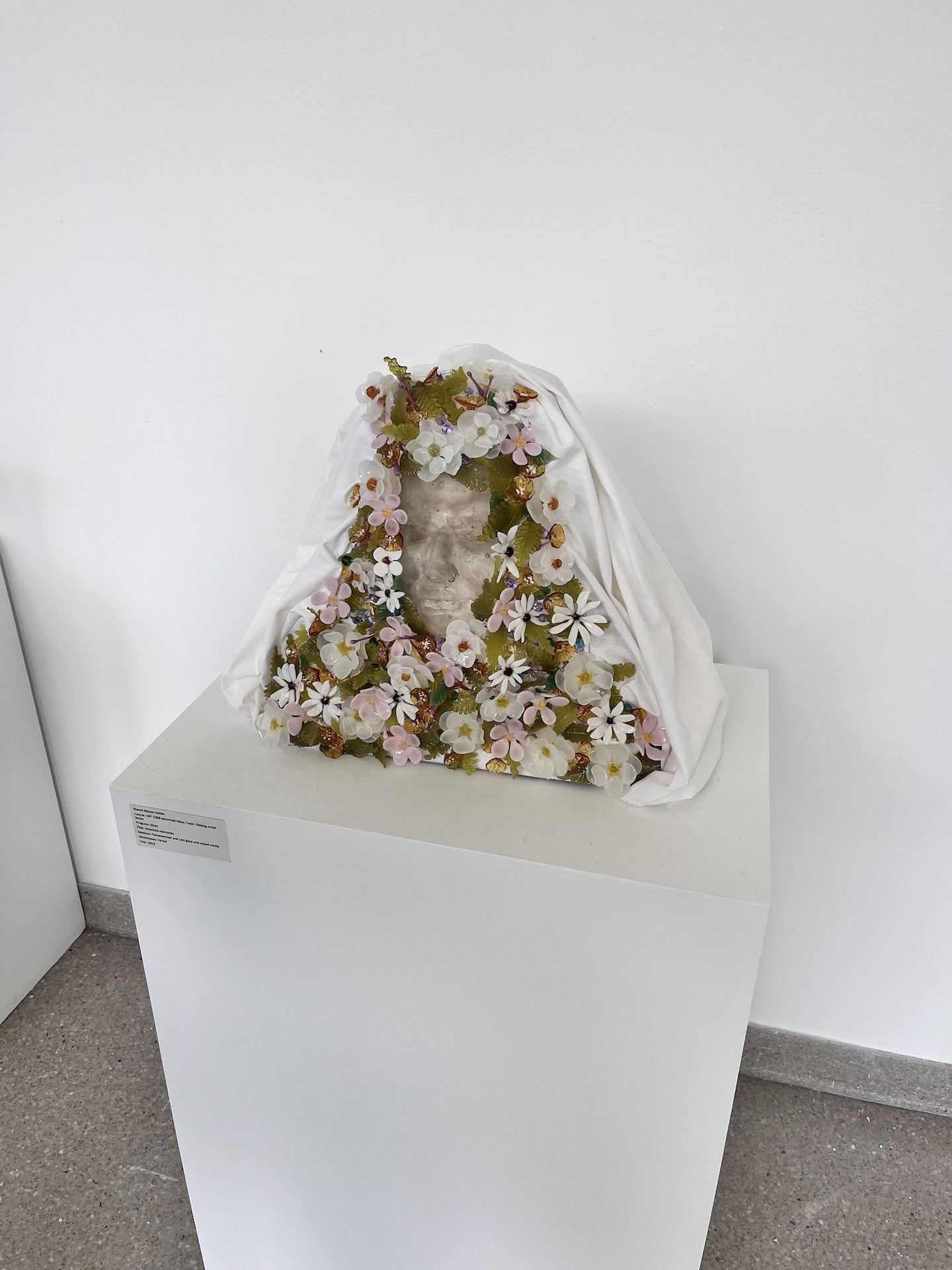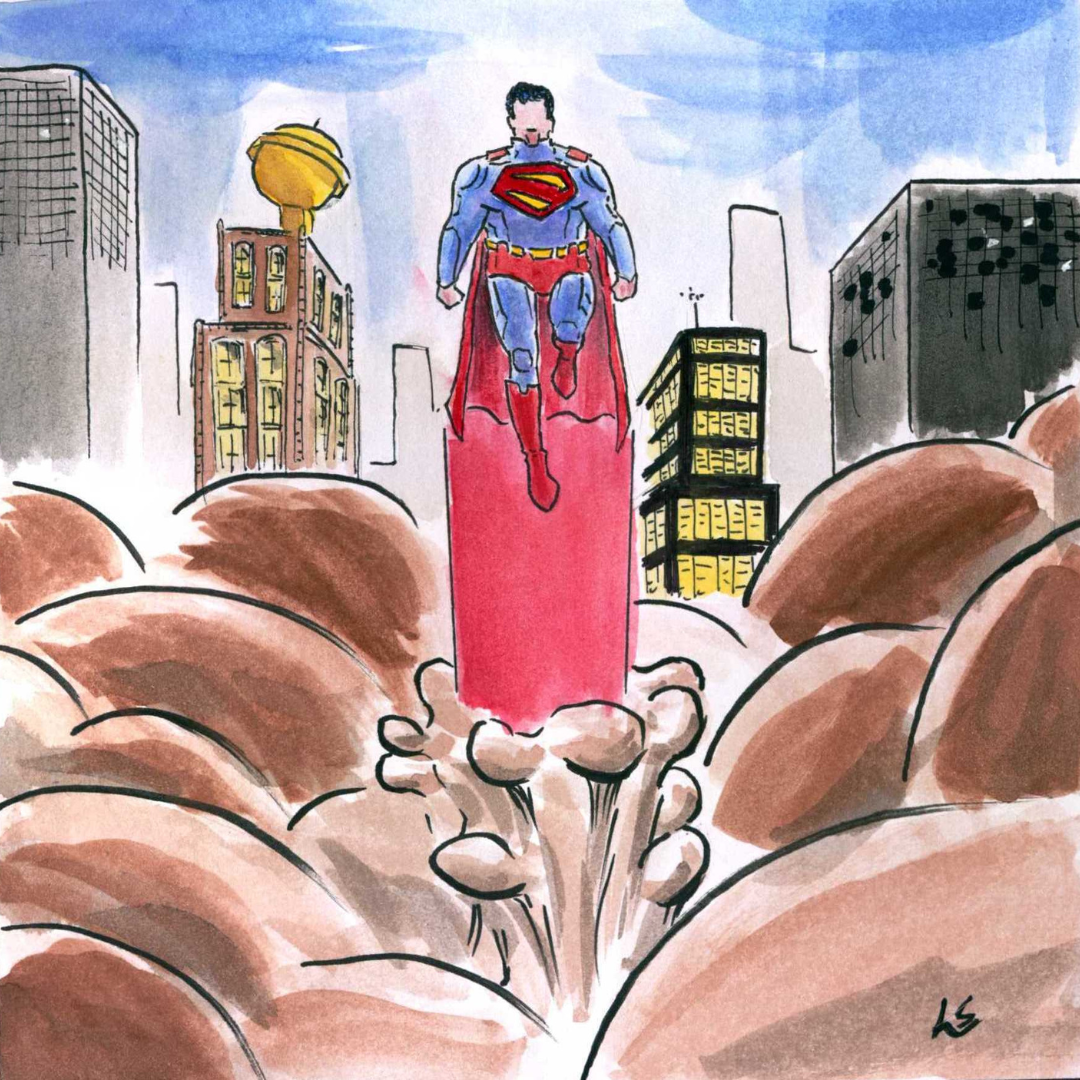A burst of heat hit my chest as I stepped into the “hot room.”
This room, on the first floor of the Tyler School of Art and Architecture on Temple University’s campus, is where all the creativity is brought forth. It is where Temple students who have declared glassblowing as their major work as a well-oiled machine.
Glassblowing is an art that dates back to the first century B.C. in parts of the world now known as Iran, Israel, Lebanon and Palestine. In Roman times, the government set up glassblowing workshops. Both back then and now, items are made for practical or artistic use.
Some of the Temple majors prefer “production glassblowing” over “artistic.” Noemi Nieves-Hoblin ’24, a senior glassblowing major, prefers art. She makes jewelry and sculptures. One of her signature pieces, which sits on a stand in the hallways outside the hot room, is made entirely out of glass. This piece is a clear mold of her face with various pastel-colored flowers and different shades of greenery on all sides of her face.
In the hot room, students tiptoed around, cautious of those around them getting glass out of the furnace, molding hot glass on tables and dipping heated rods into buckets.
Against the wall are three reheating chambers, which are used to reheat cooled glass. They radiate heat the second the students open the doors to access a red circle of heat where molten hot glass is stored. There is also what they call a “garage,” which is a space the size of a pizza oven where pieces that have already cooled but need more work are kept.
“We have the best facilities in all of pretty much America,” said Izzi Rothman ’23, a senior glassblowing major who will graduate in December.
It’s also a diverse space.
“Our hot shop is predominantly female-run and queer-led,” Nieves-Hoblin said.
I’m here on a Thursday afternoon in early October to see how students at one of the top 10 glassblowing programs in the United States operate.
The first step was to put on the safety glasses for protection. There was a black and yellow striped tape on the floor surrounding the area of heated furnaces, garages and reheating chambers, so no one would inadvertently step into the area without proper eye protection.
Once I put the glasses on, Nieves-Hoblin allowed me to step over this striped tape. Nieves-Hoblin later went on to explain how glass could explode and injure your eyes as well as burn your skin.
We then went over the dress code. While in the “hot room,” it’s important to have long pants, close-toed shoes and clothing with a natural material. Wearing polyester compared to cotton, the hot glass would melt the plastic and stick to your skin and injure you.
Nieves-Hoblin took me around to see the tools, which, in the glassblowing world, they call the “tool deck.”
The tool deck consists of jacks, which are tweezer equivalents used to shape the hot glass. There were also straight shears and diamond shears used to cut the glass, as well as a cherry wood paddle to shape the hot glass. Having a fruit wood is important because it burns slower, allowing the paddles to last longer.
Nieves-Hoblin walked around, turning on the furnaces, which were heated between 2,000 degrees to 2,400 degrees F and warmed the entire room. Nieves-Hoblin kept reminding me to take a drink of water so I wouldn’t get dehydrated from the temperature inside the “hot room.” Everyone had their own reusable water bottle.
That day, Nieves-Hoblin made a clear, round holiday ornament to show me the process. Rothman gladly assisted. Nieves-Hoblin took a blow rod, similar to a large straw, and dipped it into the furnace to gather a large bulb of scolding hot glass. She blew gently into the end of the rod, sending air into the hot glass. As the bubble formed, Rothman rolled the growing hot bubble on a metal table or “marver tables.” Nieves-Hoblin continued to blow into the rod as Rothman held it steady.
Once the bubble was the desired size, Rothman stood by, like a dental assistant, holding the tools for the next step.
After the size and shape were achieved, it was time to move over to a small dish of sand, in which Nieves-Hoblin tapped the bulb lightly, allowing the ornament to land softly on the sand.
Rothman handed her another rod with a small amount of hot glass for the topper of the ornament. Nieves-Hoblin used each of her tools and curved it into a looped top to hang. The two worked together and placed it gently into an Annealer, which stands at 955o F. Each piece that is made stays in there to cool for multiple hours until it is completely sturdy.
Nieves-Hoblin and Rothman spend a lot of their time in the studio. They are enrolled in other classes through Temple, but they are asynchronous, allowing them more time to dedicate to their major and what they love.
“Monday through Friday, we are here all day,” Nieves-Hoblin said. “There is a grindset that goes on in art school that I don’t think other departments have.”
Brynn Hurlstone, an adjunct assistant professor in the glass program, said the Tyler School of Art community is special.
“If you have to work with someone to make an object, then you need to learn how to problem solve as a team, you need to respect other people,” Hurlstone said.
Nieves-Hoblin agreed glassblowing is “communitive.” All hands are on deck with everyone supporting each other.
At the end of the afternoon, I left my ornament behind to cool. There is a high chance that it likely went back into the furnace to be recycled and used to become another creative piece. It seemed fitting in this space that my learning would be used to feed more art.

PHOTO COURTESY OF MEGAN HEINE ’25













































